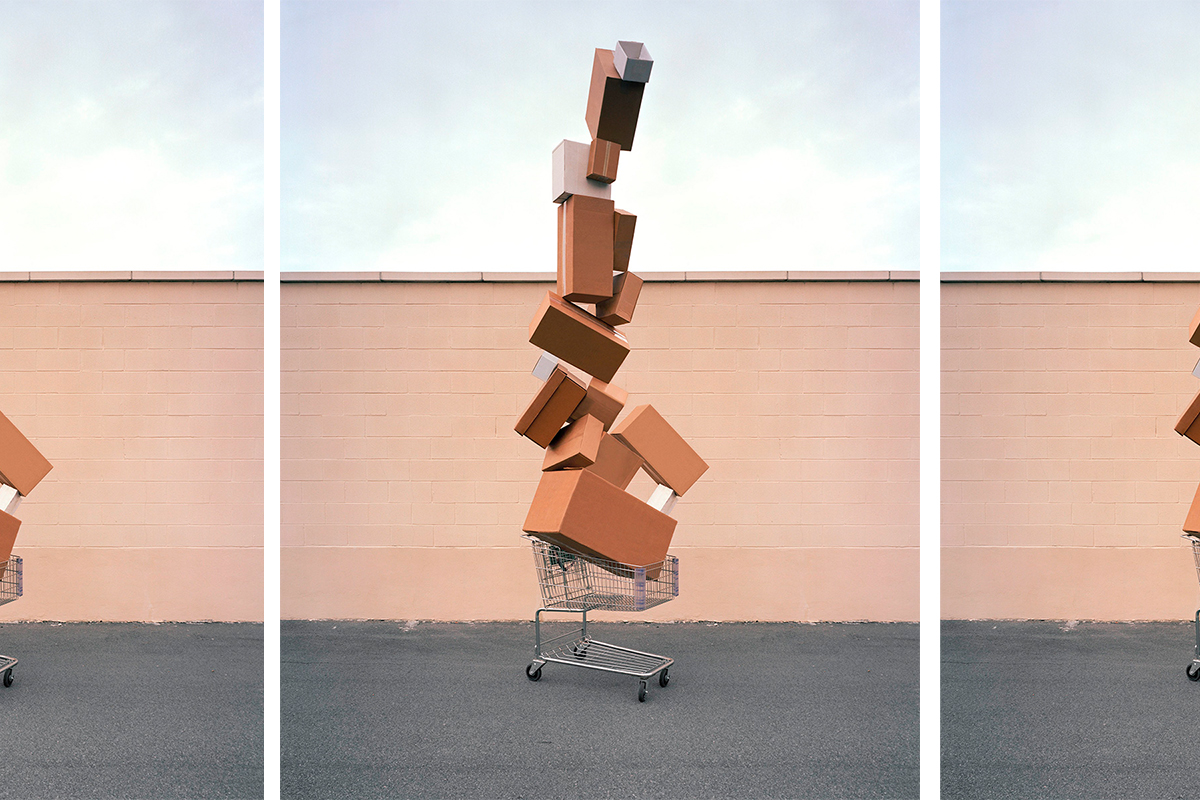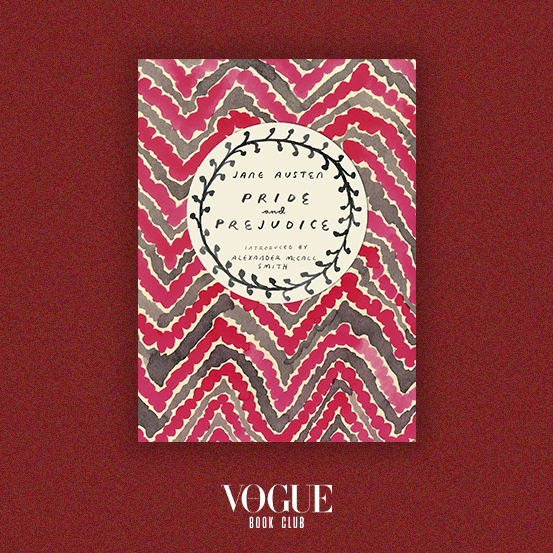It is the nightmare of any shopaholic: closed shops, fitting rooms prohibited, shop windows closed. New collection? Don’t even think about that.
It is the nightmare of any shopaholic: closed shops, fitting rooms prohibited, shop windows closed. New collection? Don’t even think about that. The new coronavirus created a reality, albeit temporary, where fashion exists only in a virtual universe. Coats, dresses, kimonos, ankle boots, python wallets that shouldn’t be produced by now, cashmere sweaters, you want it, you name it - everything is cataloged in cyber ether, closed to physical contact. To what extent does this have an impact on the act of buying, which thrives on both impulse and desire and, ultimately, touch?

Fotografia de David Welch
Fotografia de David Welch
It was, as far as I can remember, my biggest sin during the whole quarantine. Hours after the President of the Republic decided that Portugal was going into state of emergency, my main concern had nothing to do with public health. The country was going into SOS mode, the world was heading towards the abyss, but during the dawn of that March 19th, my head was totally focused on some flat Mary Janes that, years before, I had seen on the Miu Miu catwalk and that, suddenly, appeared in front of me like two white doves on a second-hand website. If that wasn’t my guardian angel spelling out in my ear “It’s now or never”, I don’t know what it was.
According to the law of probabilities, there was no way they could come to my hands like that, brand new and at such a good price - after so many time since they first appeared, so many likes after that, so many influencers with more money than me. And yet, there I was, two-thirty in the morning on a Thursday totally atypical, which will go down in history because it is the first time in our democracy that people are prevented from leaving their houses, obsessed with a shameful desire to consume. “I bought some gold sequined Miu Miu shoes” I said to my mother the next morning, guilt crossing me from side to side. “Good for you!” She replied. “When will they arrive?” They arrived five days later. But the guilt, this very Portuguese feeling, never disappeared. Until the lockdown was over, I only bought essential goods and books. Which, I believe, belong to the same category. Was I the only one?
“In the last few weeks, my purchases have been based on products and garments that I ‘needed’ and that were at an attractive price point: I ordered face and body care stuff, I took advantage of Nike sales to update my workout gear, I bought my bought my brother a birthday present (along came a sweatshirt for me, guilty) and a pair of tracksuits. I confess that part of me felt some guilt for shopping at this time, for a number of reasons - and that’s why I tried to minimize my card swipes as much as possible. Mónica Bozinoski, a Vogue journalist, clearly shares the same feeling of guilt.
Shopping, these days, seem to be both a transgression and a futility. This ends up weighing in the moment of “add to bag”, which is postponed until the word “pandemic” is nothing more than a memory of the past. “What I most wanted to buy were, without a doubt, books. I ended up focusing on those already on my shelf and adding just one novelty, Lisa Taddeos’ Three Women - but my list of books to read has never been long as it is now. When it comes to clothes, and although I flirted some By Far shoes and a Marine Serre shirt, both at an incredible price tag, my desire was completely channeled to tracksuits, sweatshirts and t-shirts - essentially, more practical and comfortable clothes, particularly from über cool brands like Pangaia and Sporty & Rich. It ended up being left in the imaginary shopping cart, waiting for less uncertain days.” And if this “practical and comfortable clothes” has sold like hot rolls in the past few weeks - the athleisure boom is not recent, the quarantine only reinforced it - other items met similar demand, such as beauty products (elastic bands), sneakers and lingerie. In the impossibility of selling spring/summer collections on the scheduled calendar, promotions and advanced sales were a way of attracting the most reticent consumers who, prevented from leaving the house, needed reasons to increase their wardrobe.
Vestiaire Collective is one of the best known, and respected, sites for selling vintage and second-hand luxury products. Its founder, Fanny Moizant, spoke with Vogue on the impact of the new coronavirus crisis on the day-to-day, and on the business, of the company. With offices in Paris, New York, Milan and Hong Kong, the immediate reaction to the first confinement and security measures was essential to guarantee survival during these months. “In order to support our customers during the lockdown, we extended the direct shipping service to all items below €500 to allow sellers and buyers to get directly involved with each other, and we also worked with our logistics’ suppliers to allow sellers to access domestic pick-ups so they didn’t have to leave the house. In terms of communication, we shared regular updates on the website and through newsletters.” Communication.
In pandemic times, communication was the most effective weapon for companies that saw their businesses reduced to online commerce, and little else. In this sense, social networks may have played a decisive role in the destiny of many brands, which have used this medium to sell products, but not only that. “Social media proved to be particularly important channels of communication for us during this period. We asked our followers what they would like us to share during the lockdown. It was great to see that a lot of people responded that they wanted to see the people behind the company. So we launched Home-made by Vestiaire, where we shared posts from our employees, and we had such good feedback among our followers that I think it helped bring our community even closer.” This point is particularly interesting, because not all brands were able to understand the mindset to adopt during the quarantine. In their defense, it was not easy to go from the pre-programmed daily posts, alluding to the X collection or the Y novelty, and the respective link to “add to bag.”
However, there was a clear divide between those who understood the necessary change, and who knew how to adapt to these new times, and those who continued to prolong a state of numbness far beyond what would be expected. This is probably reflected in sales. But that data somehow belongs to God. Vogue asked Inditex, which owns brands such as Zara, Massimo Dutti, Pull & Bear or Bershka, to comment on its action plan during the weeks of confinement, but we were told that it would be impossible to respond to any issues related to the effects of the new coronavirus due to the daily changes of procedures and decisions. The same answer was given by the German giant Mytheresa, an ecommerce website that gathers some of the most well-known names in the luxury market, because the article would be published “too close to the coronavirus crisis where we don’t give out any statements.” In early April, Business of Fashion wrote that, despite sales of all types of products having recorded historic lows, one of the sectors most affected would be, without a doubt, fast fashion, much because of the excess of pieces that by this time has grown accumulated in warehouses. And if it is true that many millennials continue to buy, the platform guaranteed, not even the luxury market would escape the fray, with stores closed all over the world: Chanel, for instance, only sells perfumes and cosmetics online; Louis Vuitton and Hermès offer a very small range in their online stores. Forecasts point a drop in sales around 30% and 40% in the luxury sector. It is as if the ghost of 2008 is back. The fact that stores have been closed for so long makes people go online and poses questions about the future of commerce as we know it. How should fashion reinvent itself to meet these new needs? Will we start to buy more through our mobile phones?
In the first edition of Vogue Global Conversations, Stephanie Phair, CCO of Farfetch and a member of the British Fashion Council, pointed out part of the new way forward: “I think there are huge developments in technology that can make you feel your clothes, but online. It won't be one or the other. I think we are moving towards a union, even closer, between online and offline, where the customer will be at the center and will be able to experience fashion in these two environments.” Phair envisioned a scenario in the future where a customer can enter a store to try on a piece and then complete the purchase later through digital, creating a more ubiquitous approach for brands and stores. And she added: “I think brands will want to control their products. I think brands will want to move away from something that is not controlled and rely on concession models where they can control their product, whether online or offline, and consequently invest in their own online commerce.” But as with everything, this is all about balance. It’s not just about selling, it’s about creating human contact. If there is an industry capable of adapting, I think it is the fashion industry, because we are a storytelling industry.”
Stories. This period is full of them. All are valid. All are memorable. Joana Moreira, Vogue’s beauty editor, tells her: “I am very conscious and thoughtful in the purchases I make, and this time was no different. I had already planned to buy some basic black slingbacks, and I proceed with the purchase, the difference being I ended up choosing an independent brand and buying directly from the brand, avoiding intermediaries. In beauty, I had a gua sha in mind for a long time, so I decided to take advantage of this time when we are at home (and with more time for self-care) to do it. Once again, I bought directly from the brand, also an independent and Portuguese brand. I increasingly believe that any purchase is a political act and, for me, this time is an example of that.”
Fanny Moizant assures us that she felt “a shift towards more affordable prices and brands”. The standard customer of Vestiaire Collective “is between 25 and 40 years old, so the millennium generation represents a significant portion. We saw a 20% increase in orders in April, compared to the previous average for February. At the same time, however, we also saw a 33% increase in deposits in the same period, so it is possible that our customers are feeling more aware and selling their old stuff to finance new purchases.” She believes that the pandemic will change "attitudes and values in relation to consumption." And that can be a sign of positive evolution. “There are signs that consumers are becoming more value-oriented, with a greater focus on sustainability, and are more likely to look for products with high longevity. [...] We hope that this will further increase interest in the second-hand and vintage market. In fact, last week, we had the biggest sales day ever, while sales in Europe are currently 20% above pre-COVID-19 levels.”
Punch line: all sins will be excused if they are committed with sustainability, or upcycling, in mind.
Most popular

.jpg)
Para Daisy Edgar-Jones, o fascínio pela beleza começou com o blush da sua mãe
08 Jan 2026

Relacionados





